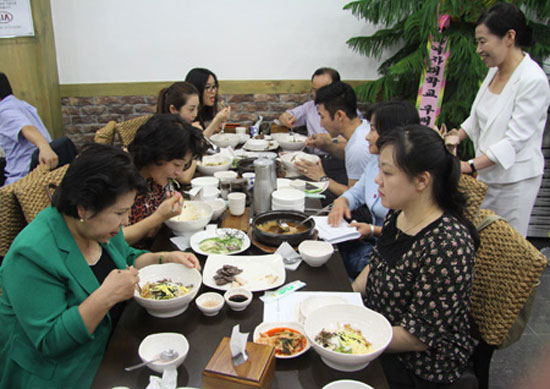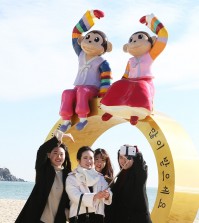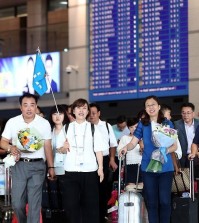- California Assembly OKs highest minimum wage in nation
- S. Korea unveils first graphic cigarette warnings
- US joins with South Korea, Japan in bid to deter North Korea
- LPGA golfer Chun In-gee finally back in action
- S. Korea won’t be top seed in final World Cup qualification round
- US men’s soccer misses 2nd straight Olympics
- US back on track in qualifying with 4-0 win over Guatemala
- High-intensity workout injuries spawn cottage industry
- CDC expands range of Zika mosquitoes into parts of Northeast
- Who knew? ‘The Walking Dead’ is helping families connect
Chinese tourists not impressed with Korean food
Visitors did not like grilled fish, naengmyeon (cold buckwheat noodle), gukbap (soup with rice), ssambap (vegetable-wrapped rice), and doenjang jjigae (soybean paste stew).

According to the Korea Culture and Tourism Institute, 810 foreigners who visited Korea last year, 350 of them from China, graded Korean cuisine at 74.4 out of 100. (Korea Times file)
By Kim Rahn
Korean food, or hansik, is emerging as a trendy cuisine in many parts of the world, and it is on top of foreigners’ minds when they think about Korea.
However, a recent survey showed that Korean foods that foreign visitors have experienced were not as good as they thought they would be.
According to the Korea Culture and Tourism Institute, 810 foreigners who visited Korea last year graded Korean cuisine at 74.4 out of 100.
It conducted the survey on 350 Chinese, 120 Japanese, 190 Asians from other countries except China and Japan, 59 Americans, 43 Europeans and 41 others. The numbers were decided according to the ratio of visitors to Korea.
By region, Americans gave the highest score, 82.4, followed by Japanese, 78.5; Europeans, 77.8; others, 76.3; and Asians except for Japanese and Chinese, 76.2.
But Chinese, who take up the largest portion among foreign travelers here, were not very satisfied with Korean food, giving it a collective 70.
“We presume Chinese showed low satisfaction because a relatively higher ratio of them came here with cheap package tour programs than people from other countries,” a researcher at the institute said.
“Such package programs usually include meals at cheap restaurants that admit group tourists, rather than decent, or locally famous restaurants.”
During their stays in Korea, 72.5 percent of the respondents said they had bibimbap (rice mixed with assorted vegetable), while 60.6 percent had bulgogi (grilled beef); 57.2 percent, samgyeopsal (grilled pork belly); 51.2 percent, fried chicken; 51 percent, tteok (rice cakes); and 46.4 percent, gimbap (dried seaweed roll), with multiple replies being allowed.
Japanese liked galbi (marinated beef strips) the most, while Chinese liked samgyeopsal; other Asians, bibimbap; and Americans and Europeans, bulgogi.
What the visitors did not like the most was grilled fish, followed by naengmyeon (cold buckwheat noodle), gukbap (soup with rice), ssambap (vegetable-wrapped rice), and doenjang jjigae (soybean paste stew).
In an earlier research conducted by the Ministry of Culture, Sports and Tourism and the Korea Foundation for International Culture Exchange on 5,600 people in 14 countries, 17.2 percent said that K-pop came to their mind when they think of Korea. Korean food came in second, followed by high-tech information technology, soap operas and beauty treatment.
















Pingback: Lastest Korean Cuisine News |
kelly
November 25, 2017 at 1:28 PM
yes..I like the basic concepts behind Second Life but it seems incredibly outdated and when I played it was intensely non-intuitive / user friendly to an extent that made EVE look like a game for toddlers. thanks from
togel online
leticia
December 23, 2017 at 3:44 AM
i really really like this article and it give me so much information badoqq